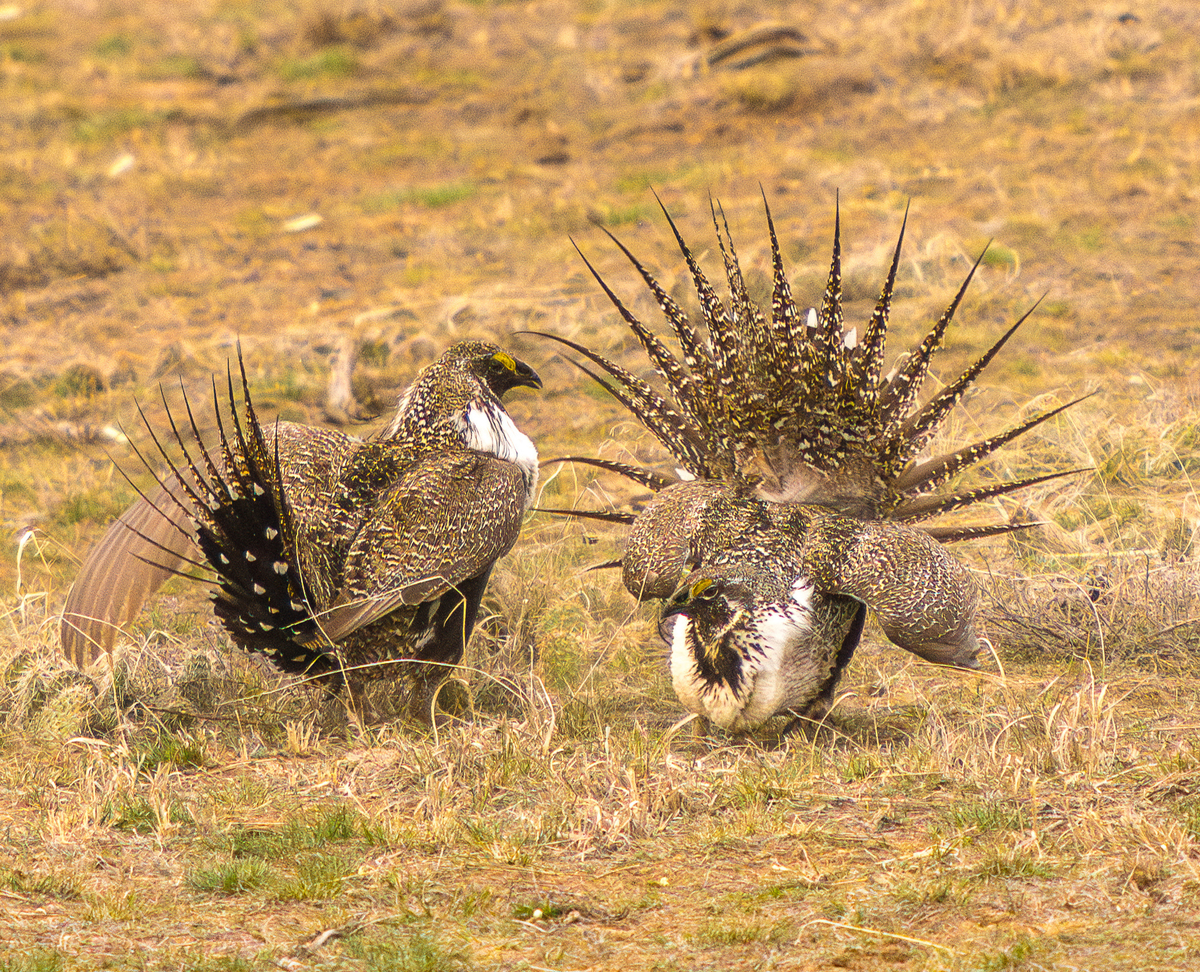Below is an op-ed authored, in part, by the Rocky Mountain Elk Foundation and submitted to the Colorado Sun. Sage grouse and elk share much of the same habitat.
The plight of the greater sage grouse, an iconic symbol of the American West, mirrors the ecological challenges confronting its habitat — the vast and vital sagebrush steppe. This unique landscape spans 14 states and three Canadian provinces, including 1.8 million acres in Colorado, and supports not just the sage-grouse but over 350 other species of conservation concern.
While many across the country might associate this landscape as the backdrop to old Western movies, for sportsmen and women, ranchers and the myriad of others, we call the sagebrush country home. That’s why the bird’s 80% population decline since 1965 is not just alarming — it’s a call to arms.
And the sagebrush ecosystem is more than just a habitat for wildlife. It’s the backbone of the West’s ecology, crucial for clean air, water and the economic well-being of local communities. It plays a pivotal role in sustaining water supplies, bolstering local economies and preserving the cultural heritage of Western communities. Yet, the future of sagebrush country is at risk, as we are losing 1.3 million acres of functioning habitat every year across the West to invasive species like cheatgrass, wildfires and development.
Colorado’s greater sage grouse populations alone have declined by two-thirds since 2015.
Facing these dire facts, the Bureau of Land Management has initiated revisions to its resource management plans. While these proposed revisions are specific to how sage grouse habitat on public lands may be managed, these plans have the potential to result in healthier sagebrush country overall.
Informed by the latest scientific insights and attempting to address growing concerns around threats caused by more unpredictable climate conditions, attention around improving management of this bird’s habitat represents a crucial step toward keeping the bird off the endangered species list. By focusing conservation efforts on the most crucial habitats, there’s a glimmer of hope for reversing the species’ decline.
For those of us who cherish the Western way of life — hunting, fishing and simply being stewards of the land — the conservation of the greater sage grouse is a reflection of our commitment to the land that sustains us. The philosophy of “good for the bird, good for the herd” resonates deeply, underscoring the interconnectedness of healthy ecosystems and thriving wildlife populations.
This unprecedented level of collaboration among private landowners, ranchers, hunters and federal land managers over the years underscores a collective commitment to this cause, rallying around the belief that we must act decisively to ensure the survival and prosperity of sagebrush country. However, the path forward is not without its challenges, which include continued encroachment of invasive species, more frequent fire and further land development.
The BLM’s new draft plan considers some of the newest science, which can lead to improvements in priority habitats and that work can be monitored so we can hold BLM accountable. We are now in a 90-day comment period and there’s a palpable sense of urgency among Colorado’s hunting and fishing community to engage in this process, ensuring that the final plan embodies the most effective conservation measures. We need the right actions in the right places, and we don’t have time to waste.
As lifelong hunters, we see sagebrush country as more than just a hunting ground; it’s a legacy we’re entrusted to steward for future generations. The greater sage grouse’s decline in Colorado and the West is a stark reminder of the fragility of this ecosystem and the need for proactive, collaborative conservation efforts.
This isn’t just about a bird. It’s about maintaining the ecological balance that supports all forms of life, including ours.
The battle for the greater sage grouse and its sagebrush home is a testament to the challenges and opportunities that lie ahead in conserving the American West’s natural heritage. With the BLM’s draft amendments as a guidepost, it’s time for sportsmen, conservationists and all stakeholders to unite in a shared vision for the sagebrush ecosystem and a call for improving how we manage these important public lands.
Our actions today will determine whether this iconic Western landscape, and the diverse life it supports, will ensure survival of the bird as well as survival for vibrant agriculture production and rural economies for generations to come or if it will be a skeleton of what it once was.
The time for decisive action is now. Let’s rise to the challenge and ensure a vibrant future for our sagebrush country in Colorado and across the West. Please read and take time to comment on the BLM plan before the June 13 deadline.
Patt Dorsey is the director of conservation operations for the National Wild Turkey Federation; David H. McCord is the wildlife director for the Colorado State Muzzle Loading Association; Ryan Bronson is director of government affairs at the Rocky Mountain Elk Foundation; and Mia Anstine is the Four Corners SCI and Region 13 representative for the Safari Club International.
(Photo credit: Rocky Mountain Elk Foundation)
